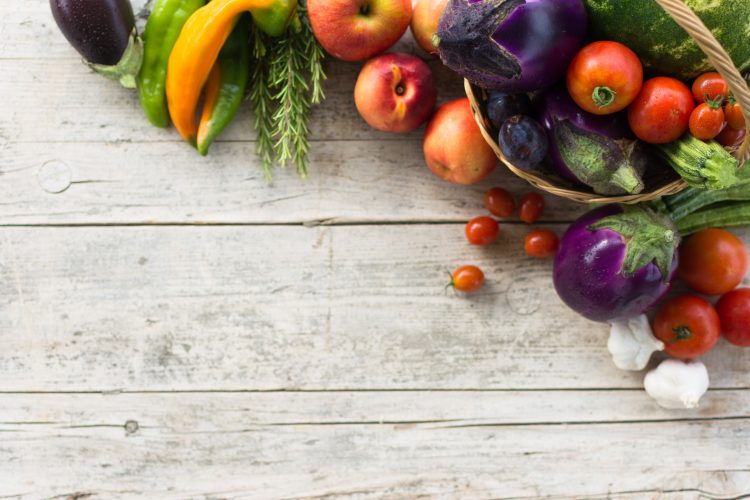Pollen food syndrome: The hidden allergy
- Like
- Digg
- Del
- Tumblr
- VKontakte
- Buffer
- Love This
- Odnoklassniki
- Meneame
- Blogger
- Amazon
- Yahoo Mail
- Gmail
- AOL
- Newsvine
- HackerNews
- Evernote
- MySpace
- Mail.ru
- Viadeo
- Line
- Comments
- Yummly
- SMS
- Viber
- Telegram
- Subscribe
- Skype
- Facebook Messenger
- Kakao
- LiveJournal
- Yammer
- Edgar
- Fintel
- Mix
- Instapaper
- Copy Link
Posted: 8 May 2024 | Dr Bhavini Shah | No comments yet
In this piece, Dr Bhavini Shah, GP at LloydsPharmacy Online Doctor, seeks to demystify common but little-known allergic condition, pollen food syndrome.


By Dr Bhavini Shah, GP at LloydsPharmacy Online Doctor
Also known as oral allergy syndrome, Pollen Food Syndrome (PFS) is a hypersensitivity reaction to plant-based foods like fruits, vegetables, and nuts. The condition can cause mild irritant symptoms including itching of the mouth, lips, and throat when these foods are consumed in their raw form.
A recent survey conducted by LloydsPharmacy Online Doctor revealed that although 50 percent of respondents said they suffer from hay fever, 71 percent hadn’t heard of PFS and just 12 percent felt ‘very confident’ identifying the foods that commonly cause PFS. This lack of awareness is concerning, especially considering that PFS affects around two percent of the population – around one in 50.
PFS often occurs in people who experience hay fever, although this is not always the case. The cause of PFS lies in the protein structure of many plant-based foods, such as fruit and cereals. These structures are very similar in shape to the pollen in the trees, grasses, and weeds that cause hay fever.
Your immune system doesn’t always recognise the difference between the pollen you breathe in from things like trees, and the pollen structure in the plant-based foods you eat. Essentially, PFS results when the immune system recognises the food protein you eat as an allergen and creates an allergic reaction, resulting in similar symptoms to hay fever.
The foods that trigger PFS
Fresh fruit, raw vegetables, and raw nuts are the kinds of foods that trigger PFS. While almost any fruit, vegetable or nut can cause a reaction, in particular, raw apples, fresh peaches, kiwis, hazelnuts, and almonds are common triggers. On average, those with PFS will need to avoid four trigger foods.
Recognising the symptoms of PFS
The symptoms of PFS are usually mild and tend to occur within 10 minutes of eating the allergic food. These can include redness, itching, and mild swelling of the lips, tongue, inside of the mouth, ears, and throat. Some people even notice symptoms just from food preparation. For instance, food particles in the air can trigger sneezing, a runny nose, and eye irritation, and peeling fruit and vegetables may cause skin irritation.
Although rare, more extreme symptoms like nausea, vomiting, trouble swallowing, and breathing difficulties can occur. In such cases, it’s crucial to seek urgent medical treatment.
Managing a PFS reaction
Generally, mild PFS symptoms settle within an hour, without treatment. Simply stopping the consumption of the food and drinking some water can alleviate the symptoms. However, if you’re concerned or your symptoms are especially unpleasant, you could also take a non-drowsy antihistamine.
If you have taken an antihistamine but your symptoms are not improving, you should seek medical advice. If you have a food allergic reaction which affects your breathing or circulation, for example, causing faintness, do not rely on antihistamines or an asthma inhaler. Instead, speak to a medical provider urgently.
Preventing PFS reactions
PFS reactions can be prevented by avoiding trigger foods in their raw form. Once well-cooked or tinned, the allergens will have been denatured and should not cause an issue. This means a soup containing allergic food may not cause symptoms but a stir-fried vegetable – which has been very gently cooked – may be an issue.
Some people also find that they can tolerate certain varieties of the same food. For example, one variety of apple may cause reactions, whereas another may not.
If food preparation triggers your symptoms, wearing gloves or peeling allergic foods under running water can be an effective workaround.
If you do have to cut certain triggering plant foods out of your diet, ensure you replace these with other, tolerated foods. You still need to aim to eat at least five different portions of fruit and vegetables a day to ensure your diet remains high in fibre, vitamins, and minerals.
If you have been prescribed allergy treatment for other allergies, such as asthma and hay fever, you must keep taking these as this will help to control symptoms of PFS. If you’ve experienced a severe reaction in the past, such as anaphylaxis or breathing difficulties, you may also be prescribed an adrenaline pen.
Anaphylaxis can cause swelling of the lips and tongue, breathing problems, collapse, and loss of consciousness. In some cases, anaphylaxis causes death, meaning it must always be treated as a medical emergency.
Diagnosing PFS
If you experience symptoms of PFS, you should book a doctor’s appointment. Often, PFS can be diagnosed without further testing. However, you may be referred to have a blood test or skin prick testing to confirm a diagnosis.
PFS is a condition that requires awareness and understanding. If you suspect you might have PFS, don’t hesitate to seek medical advice. Remember, knowledge is the first step towards managing any health condition.
To access the LPOD allergy information hub, click here.
About the author
Dr Bhavini Shah is Clinical Audit Lead at LloydsPharmacy Online Doctor and also works as GP in north west London. Dr Shah completed her medical degree at University College London. She went on to complete her GP training at Imperial College Hospital.
Related topics
Allergens, Food Safety, Health & Nutrition, Research & development









